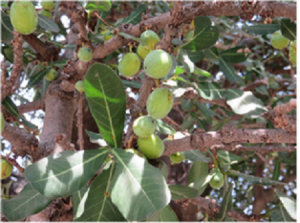 The magnificent tree Garcinia livingstonei is a distinctive component of riverine woodlands in the Okavango delta. It is known in Setswana as Motsaudi and has the English common name of African mangosteen. The genus Garcinia includes some 200 mainly Asian species. The genus name commemorates Laurent Garcin (1683-1751), a French botanist who was active in India, where the genus is particularly diverse. The specific epithet honours the great explorer David Livingstone (1813-1873), who made one of the first records of the tree in Africa.
The magnificent tree Garcinia livingstonei is a distinctive component of riverine woodlands in the Okavango delta. It is known in Setswana as Motsaudi and has the English common name of African mangosteen. The genus Garcinia includes some 200 mainly Asian species. The genus name commemorates Laurent Garcin (1683-1751), a French botanist who was active in India, where the genus is particularly diverse. The specific epithet honours the great explorer David Livingstone (1813-1873), who made one of the first records of the tree in Africa.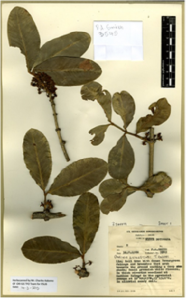
Motsaudi or African mangosteen is a dark green evergreen tree reaching heights of up to 18 m. This is a water-loving tree. It is easily identifiable from a distance because of the bare, evenly sectioned yellowish-grey stem, contrasting sharply with the very dark, dense crown. The crown always has some rigid branches rising above it at an acute angle making its silhouette spikey. The new branchlets and the leaves are invariably in verticils (arrangements around the same point) of three.
Leaves also usually grow in threes in a whorl up the branches. The leaves may be variable in shape but are usually egg-or lance-shaped, blue-green with whitish veins, waxy. Flowers are borne in groups of 5 in leaf axils, on old wood. Male and female flowers are borne on separate trees, small, cream to greenish-yellow, sweetly scented. The fruits are almost round, about 2,5cm in diameter, orange-red when ripe. Usually one sometimes two seeds per fruit. It flowers from August to November and fruits are available from November to February. The flowers are full of nectar, which attracts many kinds of insects that pollinate them. The delicious fruits are sought after by animals, which disperse the seeds. 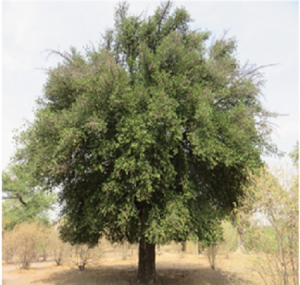 The seeds, in turn, are enclosed in a hard coat, well suited to protecting the delicate embryo on its journey through the digestive system of the animal that ate the fruit. As a favored fruit tree in the Okavango Delta, there are several places named after it, this reflects their longevity, their importance as a food source and also their distinctiveness in the landscape: they act as landmarks. The delicious fruit of the Matsaudi (plural of Motsaudi) are eaten by people, animals, and birds despite their sticky yellow juice. The tree is used in traditional medicine, and in particular, the powdered root is used as an aphrodisiac. The fruits can be fermented into a ‘pleasant alcoholic beverage’. The wood is susceptible to borers but has been used as a general-purpose timber.
The seeds, in turn, are enclosed in a hard coat, well suited to protecting the delicate embryo on its journey through the digestive system of the animal that ate the fruit. As a favored fruit tree in the Okavango Delta, there are several places named after it, this reflects their longevity, their importance as a food source and also their distinctiveness in the landscape: they act as landmarks. The delicious fruit of the Matsaudi (plural of Motsaudi) are eaten by people, animals, and birds despite their sticky yellow juice. The tree is used in traditional medicine, and in particular, the powdered root is used as an aphrodisiac. The fruits can be fermented into a ‘pleasant alcoholic beverage’. The wood is susceptible to borers but has been used as a general-purpose timber.
The distinctive whorl growth of the branchlets, in three prongs, makes a perfect impromptu whisk for cooking. This style of the whisk is ideal for cooking mealie meal in Setswana ‘phaletshe’. This traditional staple food is prepared by stirring the dry coarse powdered maize meal into boiling water, this must be done vigorously and continuously until a stiff porridge is made. The strength of the branchlet and the natural prongs of its structure make this cooking process much easier than a wooden spoon!
Written by Mmusi Mmusi, PSUB Herbarium Assistant
at Okavango Research Institute, Maun, Botswana.
Photographs by Mmusi Mmusi, Frances Murray-Hudson
and a digitally scanned image from PSUB herbarium ©2017
Contact us: Mmusi Mmusi email: mmmusi@ub.ac.bw
Frances Murray-Hudson email: fmurray-hudson@ub.ac.bw



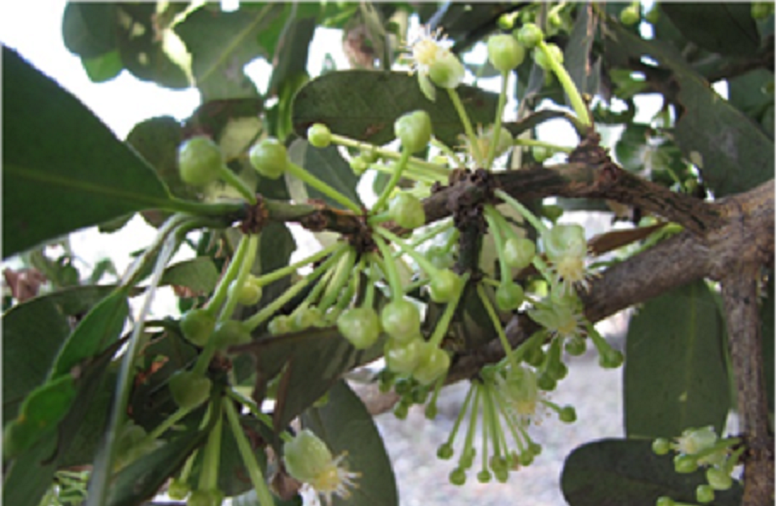

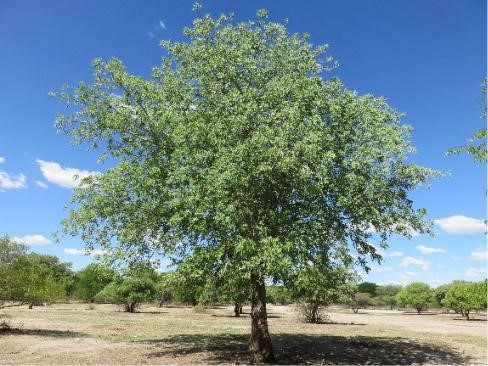
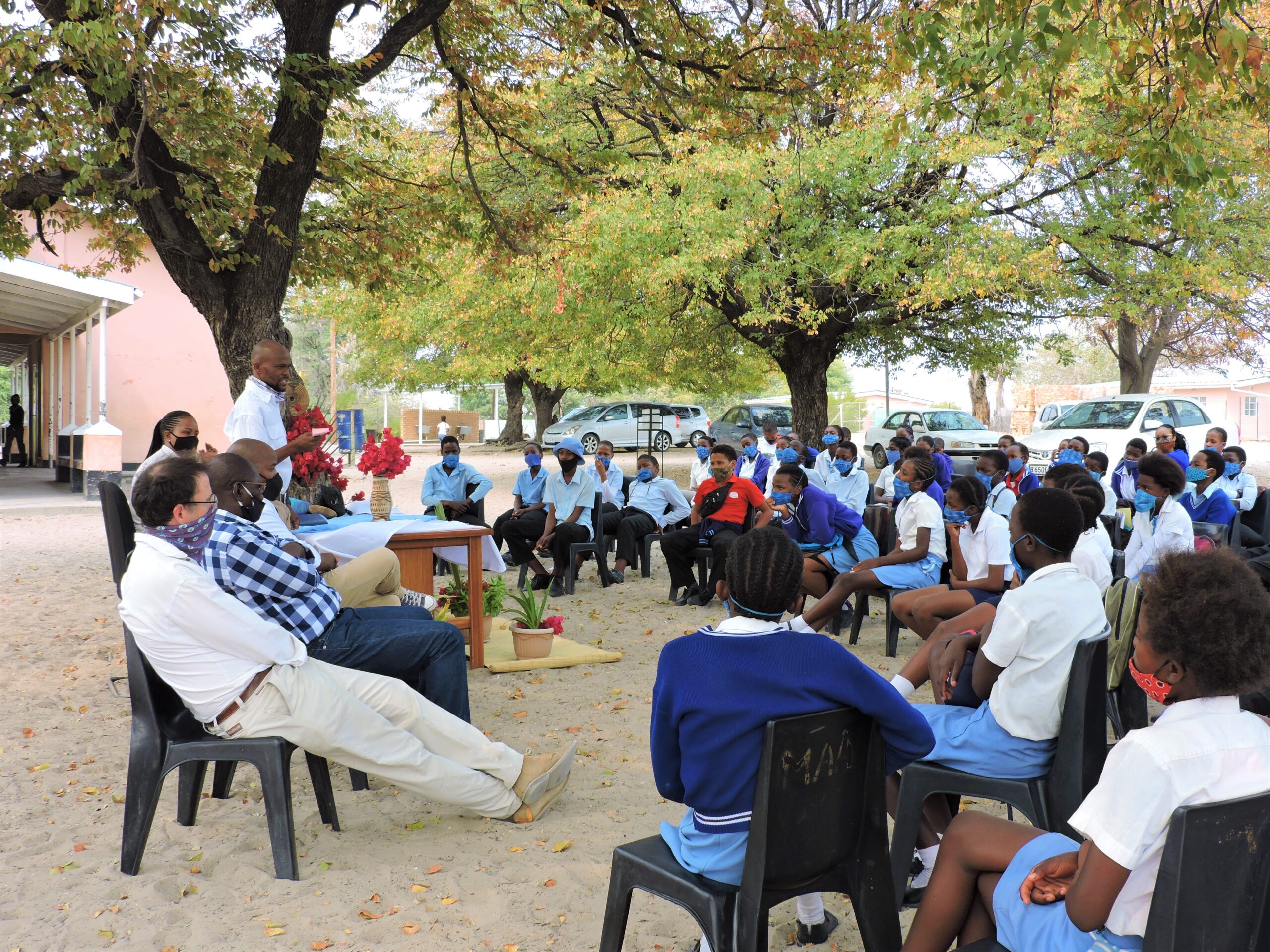

0 Comment